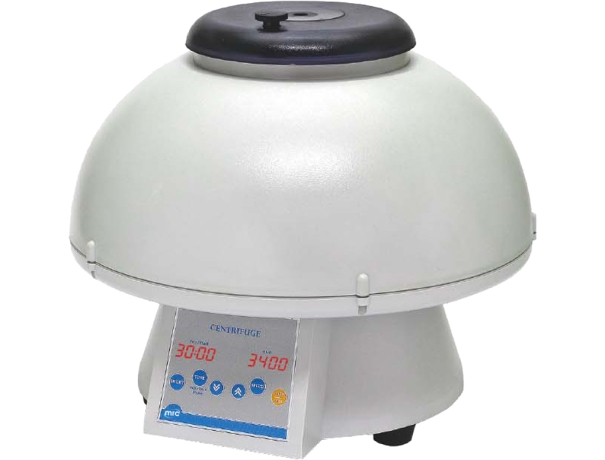In the field of dentistry, innovative techniques and technologies continue to emerge, revolutionizing the way dental procedures are performed. One such advancement is the use of centrifuge PRP/PRF, which stands for Platelet-Rich Plasma and Platelet-Rich Fibrin. This cutting-edge technique harnesses the body's natural healing properties to enhance dental treatments, promoting faster and more efficient healing processes. In this article, we will explore the concept of centrifuge PRP/PRF in dentistry, its benefits, and the role of centrifuges in its preparation.
What is PRP/PRF?
Platelet-Rich Plasma (PRP) and Platelet-Rich Fibrin (PRF) are autologous blood concentrates derived from the patient's own blood. These concentrates are rich in growth factors, cytokines, and bioactive proteins that play a crucial role in tissue regeneration and wound healing. PRP/PRF has gained significant popularity in various medical fields, including dentistry, due to its regenerative potential and ability to accelerate healing processes.

The Benefits of PRP/PRF in Dentistry
PRP/PRF offers numerous benefits in the field of dentistry. It promotes faster healing, reduces postoperative discomfort, and enhances the overall success rate of various dental procedures. The growth factors present in PRP/PRF stimulate the proliferation of cells involved in tissue repair, including osteoblasts and fibroblasts, leading to improved bone and soft tissue regeneration. Additionally, PRP/PRF can minimize the risk of infection and complications, making it an invaluable tool for dentists.
The Role of Centrifuge in PRP/PRF Preparation
Laboratory Centrifuges play a crucial role in the preparation of PRP/PRF. These devices are designed to separate the blood into its various components, including plasma, platelets, and red blood cells. By spinning the blood at a specific speed and duration, the centrifuge effectively isolates the platelets and concentrates them to create PRP or PRF. The centrifugation process ensures a high concentration of platelets, maximizing the therapeutic potential of the final product.
How Does Centrifuge PRP/PRF Work?
Centrifuge PRP/PRF works by utilizing the regenerative properties of platelets. When PRP/PRF is applied to a dental site, the growth factors and bioactive proteins released by the platelets initiate a cascade of events that promote tissue
The Process of Centrifuge PRP/PRF Preparation
The process of preparing centrifuge PRP/PRF involves several steps. Firstly, a small amount of the patient's blood is collected using a sterile technique. The collected blood is then transferred to specialized tubes or containers designed for centrifugation. These tubes typically contain anticoagulant agents to prevent blood clotting during the centrifugation process.
Next, the tubes are placed in the centrifuge machine, and the blood is spun at a specific speed and duration. This spinning action causes the blood components to separate based on their density. The heavier red blood cells settle at the bottom, while the platelet-rich plasma or platelet-rich fibrin is concentrated in the upper layer.
Once the centrifugation is complete, the separated PRP or PRF is carefully extracted using a syringe or pipette. The resulting concentrate is a yellowish fluid (PRP) or a gel-like substance (PRF) that contains a significantly higher concentration of platelets compared to whole blood.

Factors to Consider When Choosing a Centrifuge
When selecting a centrifuge for PRP/PRF preparation, dentists should consider several factors. Firstly, they need to ensure that the centrifuge is capable of generating the required centrifugal forces to separate the blood components effectively. The speed settings should be adjustable to accommodate different protocols and desired platelet concentrations.
Additionally, dentists should consider the capacity of the centrifuge, as it determines the number of samples that can be processed simultaneously. The ease of use, reliability, and maintenance requirements of the centrifuge are also crucial considerations. Dentists may consult with suppliers or colleagues experienced in centrifuge PRP/PRF techniques to make informed decisions.
Applications of Centrifuge PRP/PRF in Dentistry
Centrifuge PRP/PRF has a wide range of applications in dentistry. It can be used in dental implant procedures to enhance osseointegration and promote faster healing of the implant site. PRP/PRF can also be utilized in periodontal treatments to stimulate tissue regeneration and improve gum health. Additionally, it can aid in bone grafting procedures, accelerating bone regeneration and improving the success rate of grafts.
Furthermore, centrifuge PRP/PRF finds applications in oral surgery, helping to minimize postoperative complications, reduce pain and swelling, and promote faster tissue healing. It can be used in the treatment of oral ulcers, dry socket, and other oral mucosal conditions. Additionally, PRP/PRF can be incorporated into endodontic procedures to enhance the regeneration of damaged dental pulp and promote root canal healing.
Advantages and Disadvantages of Centrifuge PRP/PRF
Centrifuge PRP/PRF offers several advantages in dentistry. It utilizes the patient's own blood, reducing the risk of adverse reactions or infections. The concentration of growth factors in PRP/PRF accelerates the healing process, leading to reduced recovery time for patients. It can enhance the success rate of various dental procedures and improve treatment outcomes. Furthermore, the simplicity and cost-effectiveness of PRP/PRF make it a valuable addition to dental practices.